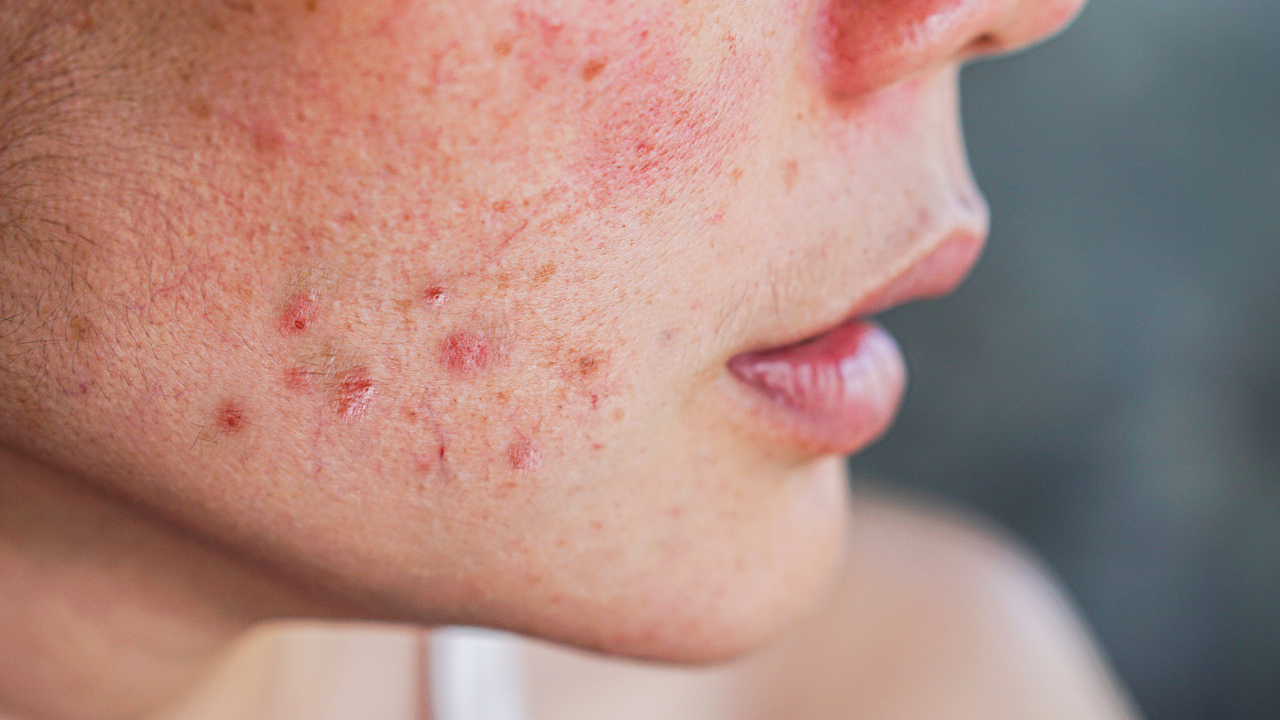In Clinical
Follow this topic
Bookmark
Record learning outcomes
NICE has recommended mental health support for people who are severely affected by their acne
While most individuals will experience some acne in their teens and early 20s, around 3 per cent of the population have acne past the age of 35 years. The condition is also tied to genetics and can run in families.
Although the type and severity of acne can vary, evidence suggests that any form of acne can cause psychological distress, which in some cases can be a part of, or contribute to, a mental health disorder.
The guideline (published in June 2021) is the first by NICE to address acne vulgaris, and offers recommendations on pharmacological and photodynamic therapies, which will help the majority of people with the condition.
Recommendations also emphasise the importance of supporting the mental health of individuals who are experiencing significant psychological distress as a result. The guideline advises clinicians to consider referral to mental health services where appropriate, especially for those with a current or past history of severe depression or anxiety, body dysmorphic disorder, suicidal ideation and self-harm.
"Acne affects most of us at some point in our lives, and while it is usually limited to a few facial spots in our teenage years, for some people it is more severe and can impact on their self-esteem and mental health," says Dr Paul Chrisp, director of the Centre for Guidelines at NICE. "Not everyone with acne will experience high levels of psychological distress, but it is important that we find ways to support those who do.
"With this guideline it is our hope that people whose acne affects their everyday lives are offered the support they need to treat the condition, both physically and mentally."
It is great that NICE has chosen to work with the British Association of Dermatologists, which has co-badged these evidence-based guidelines to help people who are suffering with acne, says Professor Nick Levell, chair of BAD’s therapy and guidelines sub-committee.
"We all hope that this will improve care for adults and children, help reduce resistance to antibiotics, highlight areas where further research is needed, and provide guidance to all those involved in looking after people with this distressing condition."
Eczema guidelines must be standardised
NICE must prioritise the development of further standardised adolescent and adult guidelines for eczema patients, says a joint report by Allergy UK and Sanofi.
Nearly half of the healthcare professionals surveyed said they did not have clear guidance around when to diagnose and refer adolescents and adults with severe eczema. This lack of guidance may have contributed to half of patients (50.3 per cent) waiting more than a year for a treatment regimen that makes their eczema manageable, says the report.
'Not just skin deep: Getting under the skin of eczema' calls on integrated care systems to have an eczema commissioning policy in place and to improve access to mental health support by commissioning psycho-dermatological support, such as counselling, as part of the patient pathway. Education and training of healthcare professionals in primary care on the range of support services available, including patient advisory groups, should also be improved.
Over 75 per cent of patients admitted eczema had negatively impacted their mental health, with depression, anxiety, and suicidal ideation more common among people with this condition. Almost a quarter of patients took more than 15 days off work a year due to their eczema with social lives and personal relationships also impacted by the condition.
Getting the most out of the skincare category
Cathy Crossthwaite, Numark OTC business development executive, offers her top tips for merchandising the skincare category:
When merchandising skincare products, pharmacies should keep in mind that there are several processes a customer goes through with their daily skin regimen, which should be portrayed in planograms to encourage additional purchases.
For example, a standard facial skincare regimen will include face wipes, eye make-up remover, cleanser, toner, serum and day or night moisturiser – a process that should be reflected in the pharmacy's fixtures.
Customers with more severe skin conditions may require support to choose the best product for their requirements, so ensure a range of products are available behind the counter, as well as on the skincare fixtures.
What are the most popular products in the skincare market?
Skincare is one of the top performing ‘toiletries’ categories within pharmacy, holding approximately 7 per cent of pharmacy space. This is primarily due to the performance of products specifically for dry skin conditions.
There are some extremely reputable brands that sit within the skincare sector that are instantly recognisable to customers and are often the go-to name for dry skin conditions, with brands such as E45 holding approximately 18 per cent of the total skincare category.
Dry skin will have been particularly prominent this winter with the increased use of antibacterial hand gels and hand washes. A separate section to support customers’ sanitisation and personal protection routines, alongside some handy travel-sized hand creams or moisturising hand washes, could prove helpful.

